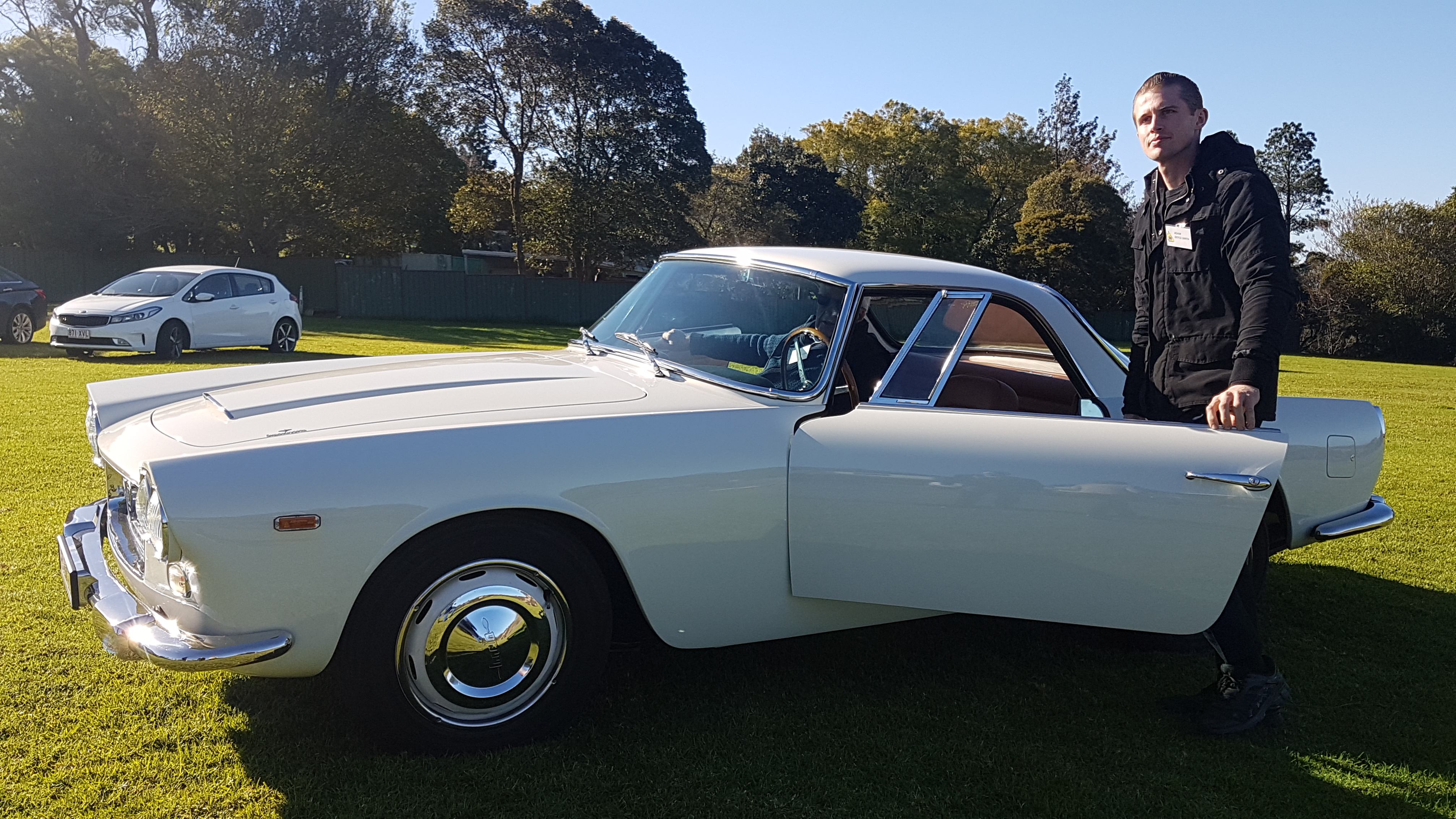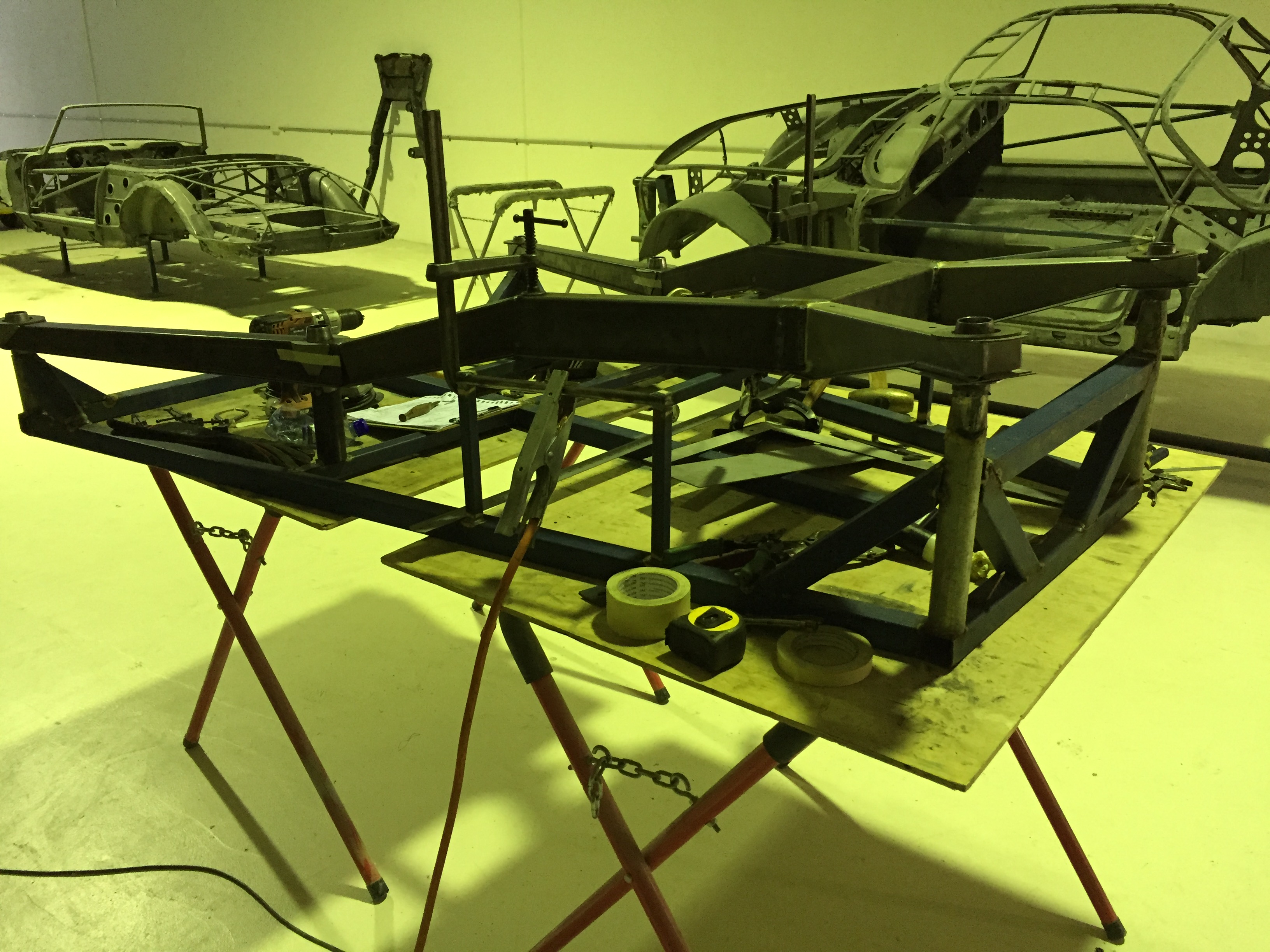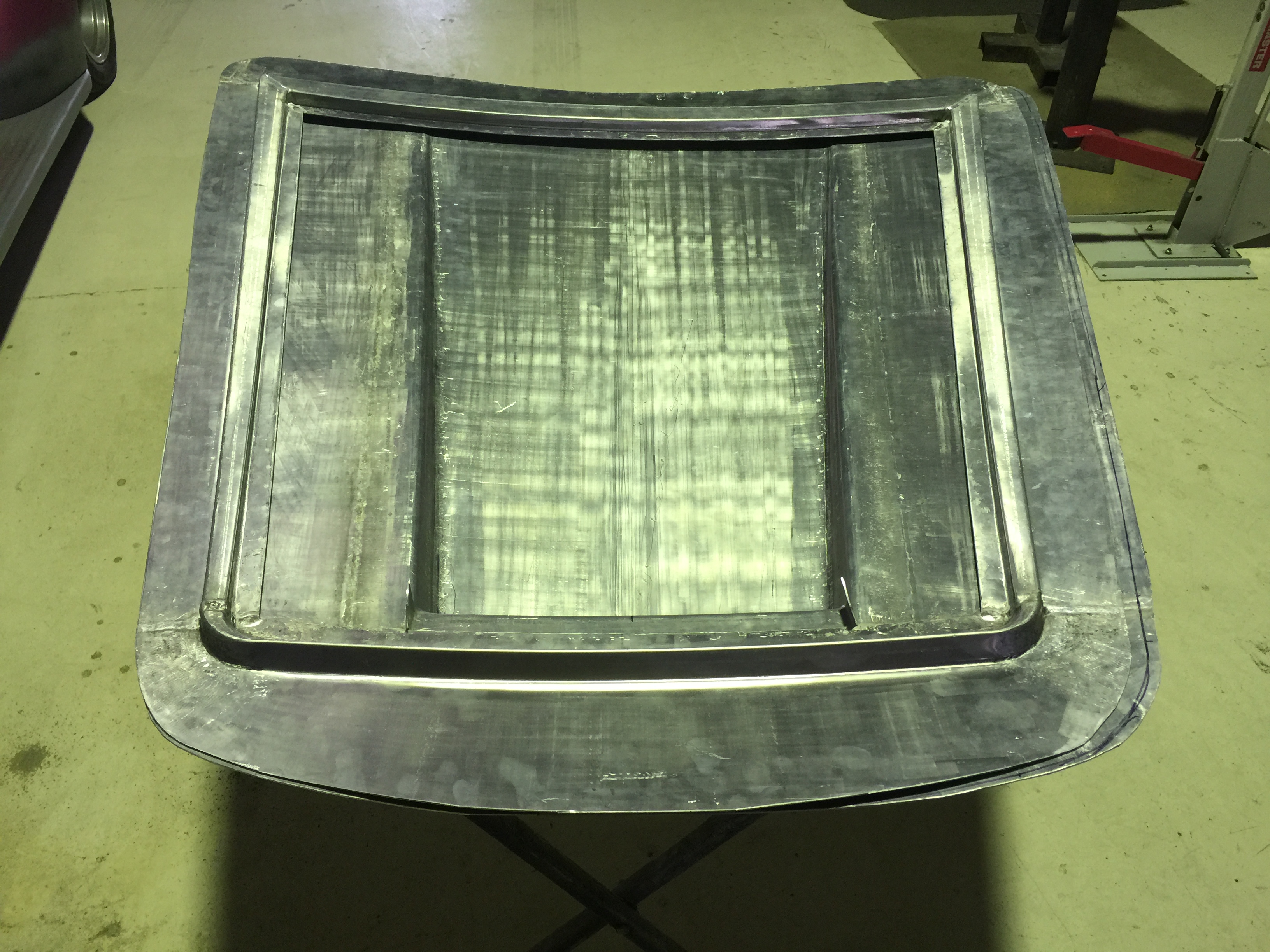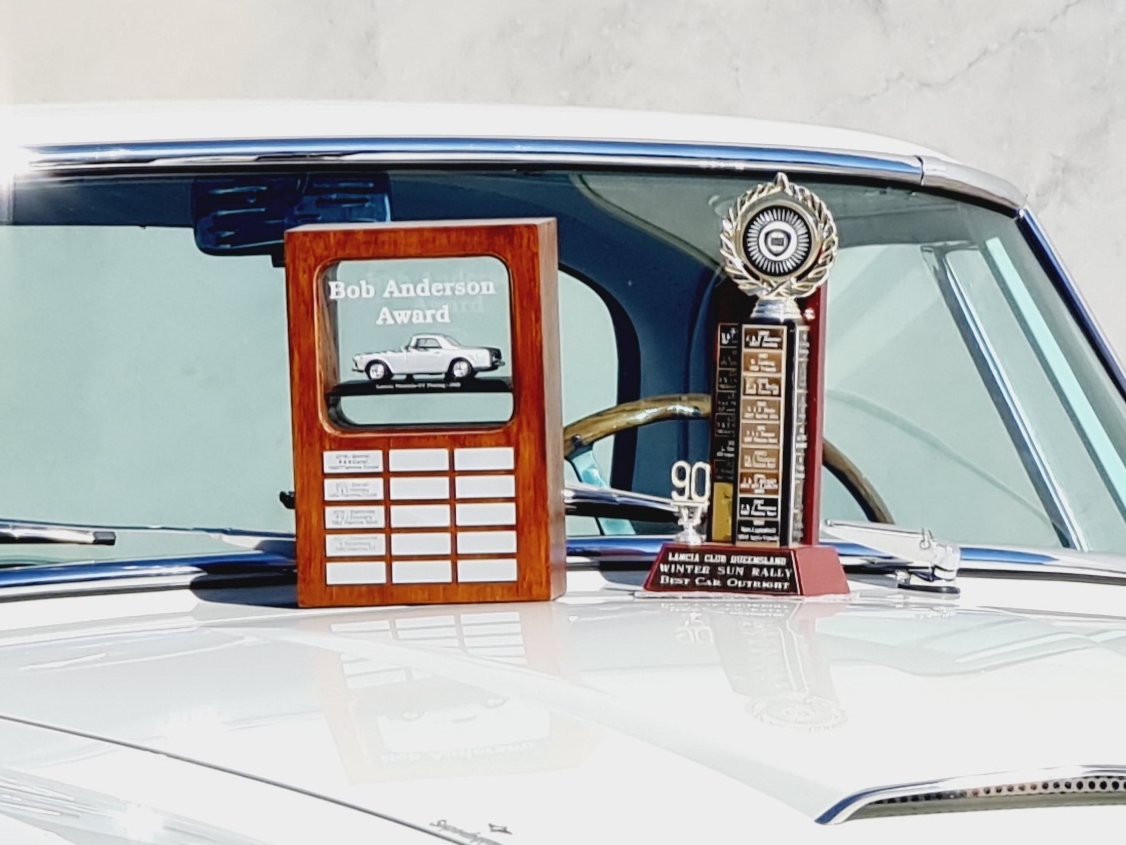
For FULL Article (35 minute read), click HERE
LANCIA FLAMINIA – Ground-up Restoration of three classics – SUMMARY (6 minute read)
This project involved three Touring-bodied Lancia Flaminias, (two GT’s and a Convertible) that were saved from extinction and preserved by two very passionate Lancia enthusiasts for future generations.
Following an extensive 5-year restoration project, the first of these is now registered (Photo 1), the second has been painted and undergoing final assembly, and the third car, (a very rare convertible) is currently being painted.

Automotive Craftsmen were commissioned in 2015, to restore these three classics for two different owners.
These Lancia’s were very advanced for their time, and the Superleggera construction method was one of many innovations on this late fifties design. They were also one of the first to use 4-wheel servo-assisted Dunlop disc brakes, a rear mounted transaxle incorporating the clutch, and De Dion rear suspension with inboard discs. (Photo 2).
.jpg)
Brief history of 3 cars in this project
The first of three to be completed and registered, chassis # 824.00 *1202, was purchased by the current owner, Keith Schafferius in 2014. Keith’s car is a 1959 Series 1 car with the 2.5 lt. V6 with a single downdraft twin throat Solex Carburettor. There were a total of 796 Series 1 cars produced.
The other two cars (one GT and a convertible) are owned by well-known Lancia collector and Past President of the Lancia Club since 2006, Paul Doumany. Paul’s GT is a 1962 Series 2 car chassis # 824.10*3813 with very low mileage and a 2.5lt. V6, fitted with triple dual throat down draft Webers. There were 682 Series 2 cars produced. Paul’s convertible is a 1965 Series 3 car chassis # 826.134*1077, fitted with a 2.8 lt. V6, also with triple dual throat down draft Webers. The increase in capacity was achieved by enlarging the bore, while the stroke remained the same. There were only 180 convertibles made in this final form.
The restoration project begins
Automotive Craftsmen commenced the restoration of these three classics in May 2015
First task – Remove Aluminium body from chassis
The aluminium bodies on these cars are folded over the steel chassis edges, and this had to be un- wrapped with great care to avoid splitting the 60-year-old metal. (Photo 3).
Keith’s GT body had been removed at a previous restoration shop and the chassis had been sandblasted and powder coated when it arrived at our workshop.
Both of Paul’s cars had the aluminium bodies still on their chassis, so the first job was to remove the bodies so the chassis could be chemically stripped using a dipping process.
This was a major task, as the only tank in Australia large enough to dip the entire chassis unit was in Sydney. Chemical stripping gives the best result, as the dipping process removes all traces of rust, even in internal panels that are not visible. It also removes all sound-deadening material and all other accumulated gunk.
(Photo 4) The metal is then treated with a neutralizing solution and a de-oxidising agent for protection. (Photo 5).
Chassis Restoration
Keith’s chassis was the least affected by corrosion as it had spent most of its life in the dry climate of California. However, there were several areas where new sections had to be fabricated and welded into place.
Once this work was completed this chassis was also sent to Sydney for the full stripping process.
Pauls GT chassis corrosion was more severe with approximately 20% needing replacement. Paul also wanted to return the GT to left hand drive to maintain originality as it left the factory. This involved detailed fabrication of the dash facia panels for the instrument cluster and the glove box, grafting the structural support brace for the steering column back to the LH side of the under-dash frame, and filling/drilling all the firewall holes.
A major task was to fabricate new sub frames for all three vehicles as there was severe corrosion in all the subframes. (Photo 6).
As can be seen in (Photo 7), the subframe is a complex piece of kit, and the alignment of all mounting points is critical, particularly the suspension mounting points. The only parts of the old subframes that could be saved were the four engine mounting points, and four suspension mount crush tubes.

Using the best of the old subframes, accurate dimensions were taken, and all steel cut to size and the individual sections were welded together then placed in an assembly jig for final welding along with six new chassis mounting points we had to fabricate. Paul was able to supply an assembly jig he had from a previous project. (Photo 8).

Aluminium Body Restoration
Part of the superleggera design philosophy is to fold or wrap the aluminium skin over the chassis edges and tubes to minimise weight. There are no bolt-on panels on these cars – (bolts and nuts are too heavy!)
The strength of the design is in the unitary construction which gives the chassis/body unit its inherent torsional rigidity and lightweight.
As part of their brief at the start of the project, Keith and Paul had a strong desire to keep as much as possible of the original cars intact, particularly the aluminium body.
The greatest challenge when working with 60-year-old aluminium, is the difficulty in re-crimping edges of the aluminium skin over the steel frame, after the frame and body have been restored. Even with the careful annealing process utilised, un-folding these edges from the frame causes micro stress fractures in the aluminium, and then further serious cracking when it comes time to refit the aluminium skin back to the frame.
The second major problem with the superleggera construction method, was the use of felt and/or hessian between the steel tubes and the aluminium skin to prevent squeaking/vibration, which gave an opportunity for water to saturate the felt or hessian to start the corrosion.
When restoring these classics, future corrosion prevention is an important consideration, as the combination of steel frame and aluminium skin can cause an electrolytic reaction. To prevent this happening, the metal frame was sandblasted and primed with a high-grade epoxy primer. The edge of the steel frame is then covered with a layer of high quality anodised aluminium tape, and the aluminium skin is then re-crimped over the metal frame. Once all the skins were re-crimped, fish oil was then sprayed around all seams.
New aluminium door skins were fabricated for all three cars, and while the door skin appears to be a relatively simple shape the difficulty factor increased considerably along the top edge of the skin.
The inner door frames on these cars are steel and were all badly corroded to the point where the only part that was able to be salvaged on five of the doors were the hinges and the upper section of the frames. A completely new RH door had to be manufactured for Paul’s GT, as the steel inner skin had extensive rust and was beyond repair. The cast hinges were able to be re-used but there is a complex hinge mount brace inside the door frame that had to be re-manufactured.
A new aluminium bonnet including inner skin was re-manufactured for Keith’s car. (Photos 9 & 10).


Final Assembly of # 824.00 *1202
The original plan was for Keith to do all assembly work in his workshop at Acacia Ridge, but after a detailed examination of all the boxes of bits it was decided that Automotive Craftsmen should complete the assembly. (Photos 11 & 12).
.jpg)
.jpg)
We soon realised our greatest challenge was the lack of correct reference material – we had a workshop manual and a parts book but these were for the Pinninfarina bodied Flaminias, and while the chassis and running gear are essentially the same, we found things were quite different in areas such as fuel and brake systems. – Many details were very sketchy, and a great deal of detail was missing.
As Keith’s car was an early Series 1, there were quite a few changes made as production progressed and a lot of information in the manual was for later models. It was very hard to find info on the early cars.
We endeavored to complete as much of the work in-house as possible to control the quality. We set up our own small zinc plating station, so all small parts could be plated in-house.
One of the many boxes of parts to be sorted was a very large plastic box full of bolts, nuts and washers both in metric and imperial. The first task was to isolate the original Lancia bolts which have the Lancia logo stamped in the head, from the myriad of Fiat and other bolts of all shapes and sizes.
As the owners were keen to retain the originality of these cars, right down to the correct bolts and nuts, our task was to restore damaged heads and threads to save as many bolts as possible. Damaged heads were built up with weld and then machined. We were able to source a few of the bolts we were missing from Europe, and for the unobtainium, we machined down some of the larger spare bolts to a smaller size and therefore retain the correctly marked heads. In addition to missing bolts and nuts, there were also many brackets etc missing that had to be fabricated from scratch.
The End result
After 5 years of overcoming challenges by the team at Automotive Craftsmen, and commitment and dedication by the owner, the car was presented at the Lancia Club Annual Rally in Toowoomba in July 2021, and was awarded the trophy for the Best Car Outright and fittingly the Bob Anderson Trophy for the best Flaminia of the Rally. (Photo 13).

...
Have a question?
Send us a message using the contact form below or just give us a call.